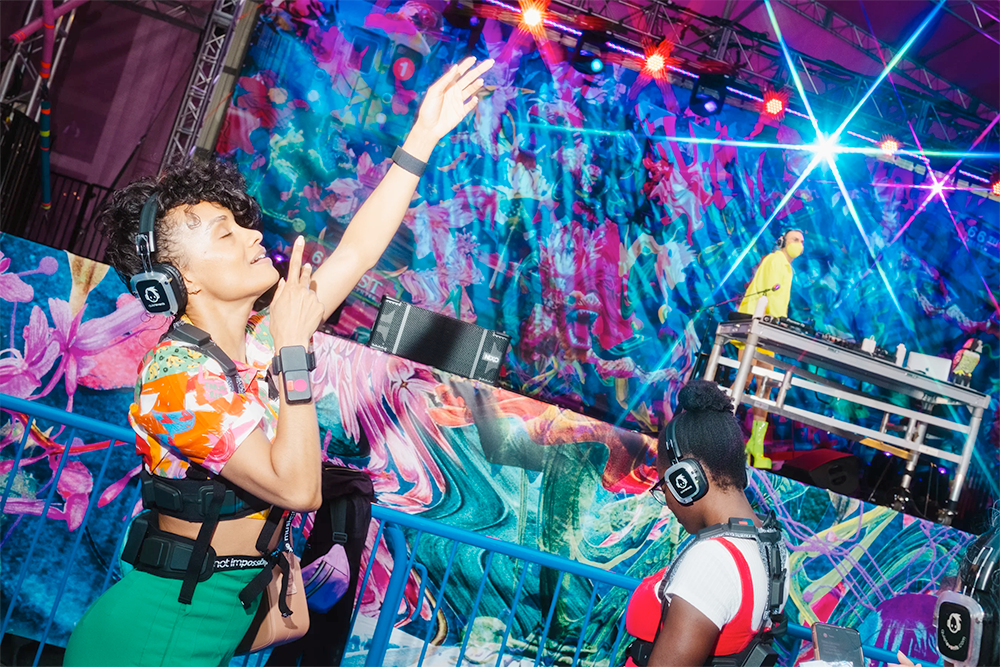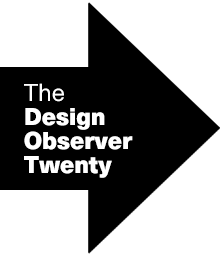
The Design Observer Twenty | Sponsored by IDEO
The Design Observer Twenty is our curated selection of twenty remarkable people, projects, and big ideas solving an urgent social need.
That mandate, remastered for a modern age, quickly became a manifesto. "It's an expansion of a welcome beyond those who already felt most comfortable with the performing arts, and beyond the forms and functions of arts that made those very people most comfortable."
Put another way, it was time for a new groove.

Concert goers dancing at the Silent Disco dance party at Lincoln Center, New York City, on Saturday, July 1, 2023. Haptic suits designed for the deaf community were provided by Music: Not Impossible. Image: Lanna Apisukh for NPR.
By the time Timms arrived at the job in 2019, Lincoln Center for the Performing Arts (LCPA) had burned through four CEOs in five years and was facing persistent headwinds, including long-delayed renovations, moribund attendance, and financial concerns. Since then, and despite a global pandemic, the site has become a condenser of art, meaning, and joy. Ten new outdoor stages have been delivering a thrum of programming — concerts, dances, films, and performances — much of it free. Blood drives. Juneteenth celebrations. Performances with vibrating haptic suits for deaf patrons. An annual Naturalization Ceremony on Citizenship Day, complete with performances. A pandemic-era #MemorialForUsAll. By the summer of 2023, more than 77% of audiences were new to LCPA, and 45% identified as BIPOC.
It has also become a platform for justice.
"If we don't open up the canon, it's going to explode," Timms says. "The idea that there is a very narrow amount of work that is performed that represents a very narrow part of society is, I think, a dangerous one for the performing arts."
That meant addressing Lincoln Center's original sin.
Lincoln Center was developed as part of New York's urban renewal push of the 1950s and '60s. New York Parks Commissioner Robert Moses created this series of aggressive — and racist — projects at the expense of Black, Latinx, immigrant, and low-income residents. Some 7,000 poor Black and Hispanic families were displaced from the vibrant neighborhood where the Charleston was born, and legend Thelonious Monk once lived and played with his peers.
So, as the renovated David Geffen Hall came back online in October 2022 — on budget and two years ahead of schedule — jazz trumpeter and composer Etienne Charles created an original work to speak to that terrible history. Other artistic commissions and a digital history hub soon followed. "It had already been in conversation, here," Shanta Thake, Lincoln Center's chief artistic officer, told the New York Times. "How do we talk about our history?"
And now they aim to shape the future.
Some 34 new board members have joined in the last three years; 45% are women, and 35% are BIPOC. A new executive team is more than half women and nearly half people of color. And the team launched a “Lincoln Center Fellows” program to identify and cultivate the next generation of diverse trustees for all constituents across campus with a goal to fill 40 positions in three years. This kind of capacity building is just as important as diverse programming, Timms says. It’s about sharing power within the still predominantly white field. (No surprise, he is the founder of Giving Tuesday and the the co-author of a book on the subject, New Power, How Power Works in our Hyperconnected World and How to Make it Work for You.)
While there is more work to do, Timms takes a rare moment to reflect. “What I have learned is that a Board and leadership who are deeply committed to a shared goal is the only way to shift organizations like ours,” he says. “I think we had a very clear sense of what we were trying to do and why it mattered, and I think we got on with it. And that can never be a stunt.”
Essay by Ellen McGirt.



